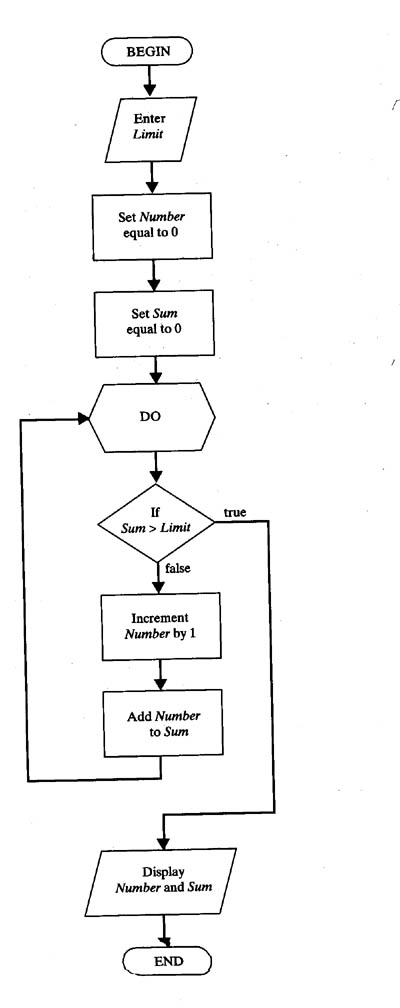
| « previous | next» |
3.3 Pseudocode and Flowcharts
Good, logical programming is developed through good pre-code planning and organization. This is assisted by the use of pseudocode and program flowcharts.
Flowcharts are written with program flow from the top of a page to the bottom. Each command is placed in a box of the appropriate shape, and arrows are used to direct program flow. The following shapes are often used in flowcharts:

Pseudocode is a method of describing computer algorithms using a combination of natural language and programming language. It is essentially an intermittent step towards the development of the actual code. It allows the programmer to formulate their thoughts on the organization and sequence of a computer algorithm without the need for actually following the exact coding syntax. Although pseudocode is frequently used there are no set of rules for its exact implementation. In general, here are some rules that are frequently followed when writing pseudocode:
Here is an example problem, including a flowchart,
pseudocode, and the final Fortran 90 program. This problem and solution
are from Nyhoff, pg 206:
For a given value, Limit, what is the smallest positive integer Number for which the sum
Sum = 1 + 2 + ... + Number
is greater than Limit. What is the value for this Sum?
Pseudocode:
Input: An integer
Limit
Ouput: Two integers: Number
and Sum
1. Enter Limit
2. Set Number = 0.
3. Set Sum = 0.
4. Repeat the following:
a. If Sum > Limit,
terminate the repitition, otherwise.
b. Increment Number by
one.
c. Add Number to Sum
and
set equal to Sum.
5. Print Number and Sum.
Flowchart:

Fortran 90 code:
PROGRAM Summation
! Program to find the smallest
positive integer Number
! For which Sum = 1 + 2 + ...
+ Number
! is greater than a user input
value Limit.
IMPLICIT NONE
! Declare variable names and types
INTEGER :: Number, Sum, Limit
! Initialize Sum and Number
Number = 0
Sum = 0
! Ask the user to input Limit
PRINT *, "Enter the value for which
the sum is to exceed:"
READ *, Limit
! Create loop that repeats until the smallest value for Number is found.
DO
IF (Sum >
Limit) EXIT ! Terminate repetition once Number
is found
! otherwise
increment number by one
Number = Number
+ 1
Sum = Sum
+ 1
END DO
! Print the results
PRINT *, "1 + ... + ", Number, "=", Sum, ">", Limit
END PROGRAM
| « previous | next» |